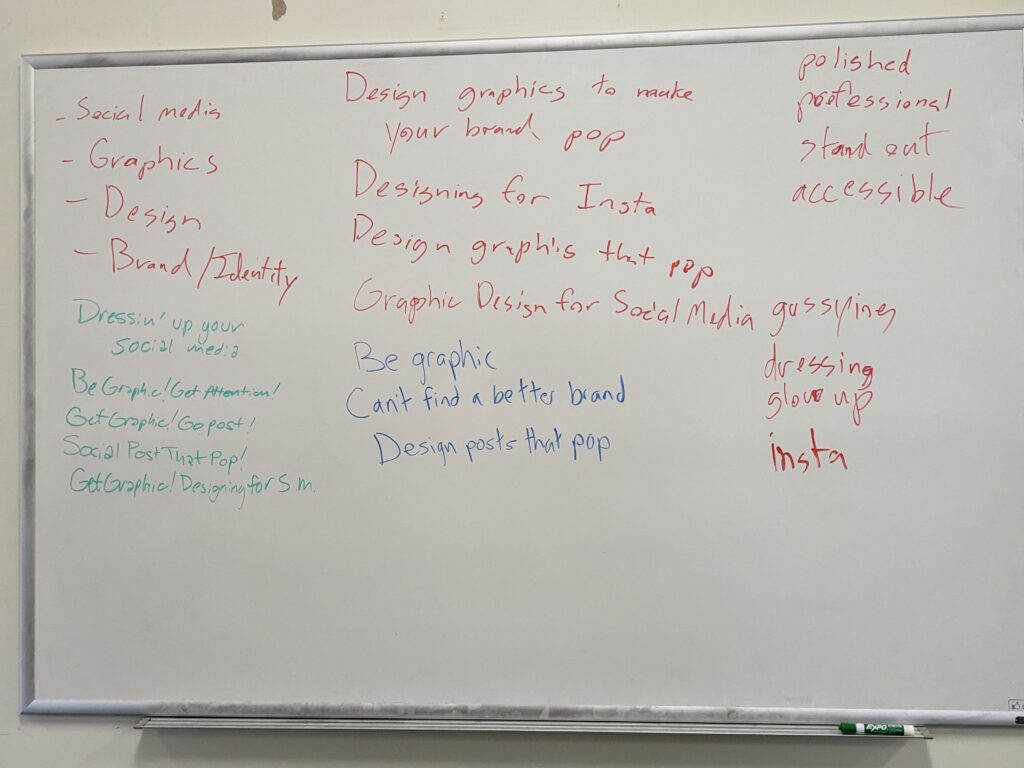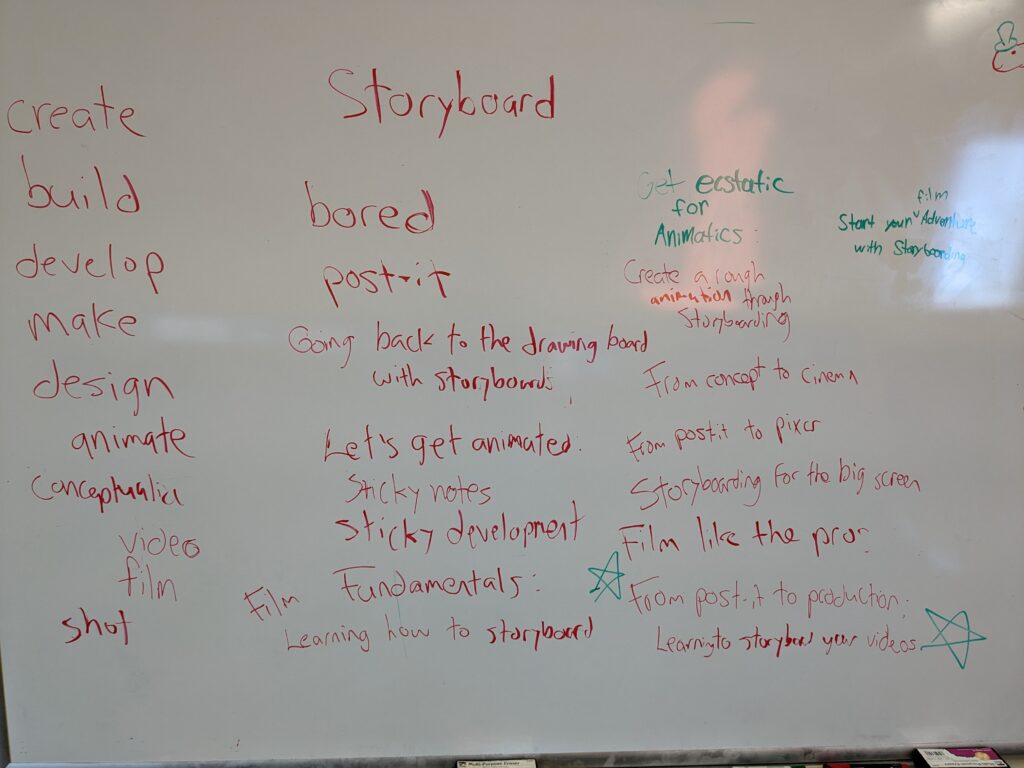One of my favorite things to come out of the work I do with my co-conspirators Cartland and Jerry is “the jam”. I believe credit goes to Cartland for the naming and codifying it into a Thing™, but it evolved out of many meetings where we would sit down and actively work on building something together. Whether it was revamping a presentation, figuring out work flows, or architecting a site we realized some of the best work came out of sitting down and hashing it out together. So, whenever we need to work on something like that we don’t call it a meeting, we call it a jam, and we go into that space ready to build, make, or blow up something. Additionally, in these collaborative moments we reveal and clarify our thinking and ideas (e.g. how do we talk about online identity to students?). I often come out the other side of those jams not only happy with what we’ve built but with a better and more nuanced understanding of the topic, idea, or purpose. It should be noted that at the foundation of all of this is trust. Even when we argue, sometimes vociferously, we all want to work towards the same goals.
Earlier this year Cartland and I were wrestling with better ways to scaffold our DKC student consultants to be better prepared for class visits. We had an explosion of class visit requests from faculty (seriously, we’ve done about double the amount of class visits than what we had done the previous two years). Some of these class visits required students to understand an assignment for a class and explain how to get started with technology tools. Many of our consultants had not done this kind of presentation and although we gave them a outline template to use to prepare for these presentations, they were not utilizing them in the way we wanted.
Cut to an evening paddle along the Rappahannock river where many a work question has been pondered. As we paddled upstream Cartland asked the question, “What if we extended the jam model to our work with students?” As soon as he said this not only did I know we had a very viable solution, but a parallel musing that had been running through my mind suddenly found itself doing a hard right turn and coming together in his simple idea. You see, one of the most the valuable parts of my undergraduate experience was my time spent as a student employee in the Division of Teaching and Learning Technologies (DTLT). It wasn’t necessarily the projects I did (although I did learn things), what I really had access to was a seat around the table (and I mean this literally) and the opportunity to listen to people (really smart and thoughtful people) think through ideas and be creative. I got to see how people think. In retrospect it seems like this shouldn’t have been a radical practice, but my schooling experience was full of assignments and projects where I was expected to complete them on my own (and in fact perhaps collaborating could even be considered cheating) and I don’t recall any moments where teachers demonstrated how they wrestled with complex questions and ideas. Cartland’s simple idea of “why don’t we jam with the students?” brought together all of this. Why wouldn’t we share the process that helped us create better things?
The jam is not necessarily a defined protocol we follow, but I do recommend that for anything you are planning to jam on with student that having an outline or questions to work from is helpful. It gives enough scaffolding to have a conversation, but by going through it together, out loud, we can also have those clarifying conversations. My favorite application of the jam has been for our DKC workshops. We encourage our students to propose a workshop around a digital skill or topic and we work with them to develop it, name it, market it, and run it.
The naming is honestly my favorite part of the whole endeavor. Once we have established a topic we gather around the whiteboard with the student (and anyone else in the room that wants to be involved) and start to brainstorm. We strongly push the “no bad idea” part of brainstorming. If you say it out loud, write it down. I think students have been able to see the value of being generative in ideas and not self-editing so quickly. You never know what is going to inspire the next thought that will lead to everyone exclaiming, “That’s it!”

Not only have we come up with some terrific names, but I think student have a lot of fun with this process too. There are often silly suggestions that don’t lead anywhere but at least one workshop on building accessible websites was titled “Oops, I Made the Web a Better Place!”. This title jam is also an opportunity to make sure we all are on agreement about what this workshop is going to be about. If you are trying to come up with a concise title and tagline it reveals what you think is important and can help clarify focus of the workshop itself.

Combining an eye catching title with some snazzy marketing graphics designed by our students has led to some fairly amazing ads as well.


We have seen an uptick in our workshop attendance this semester and I think credit can be given to the combined effect of a good title that makes a compelling pitch, alongside pushing that marketing material everywhere you can get in front of students (more props to Cartland for taking the time to figure out a process for getting this distributed to all the places at the right time. He should really write about this).
One thing I’m eager to see is how the jams will evolve over time as students gain creative confidence and become more practiced in the process. While I can’t speak for my students experience I suspect that like me at that age their experience in this kind of collaboration is minimal. I hope they see value in it and I hope we can continue to make time to prioritize it. Honestly, we are lucky we can do this kind of work because it is time consuming (in the best way). I think the jam not only leads to a better “product”, but it lets us have real human connection and a shared experience building something great.


I love the idea of extending this practice to students so much! Borrowing!